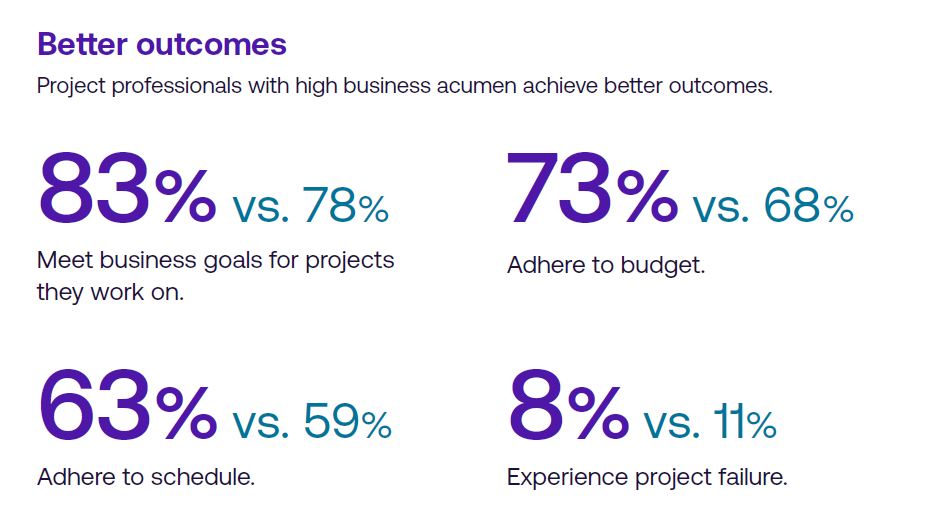Product teams are under constant pressure to ship fast and pivot quickly, but the root cause of project failure remains the same: building the wrong thing because the wrong problem was defined from the start.
This is where artificial intelligence (AI) is starting to change the rules.
AI has massively impacted design and development, but the role of AI in product discovery is still emerging. Discovery is where business goals meet user needs, and teams are now using AI-powered product discovery techniques to synthesize research, draft stories, and pressure-test ideas before writing a single line of code. The key isn’t automating strategy; it’s amplifying the human thinking that drives it.
Unfortunately, discovery often gets rushed, skipped, or siloed, leading to misalignment, vague specs, and failed delivery. According to the Project Management Institute’s 2025 Pulse of the Profession report, around one out of every four projects fails to meet key business metrics. But projects led by professionals with strong strategic capabilities, particularly business acumen, perform better across every major indicator.
What if AI could help close that gap? What if discovery could be smarter, faster, and more aligned between technology and business needs, without sacrificing the critical thinking that makes it work?

Source: PMI Pulse of the Profession 2025 report
Digital products usually begin with well-intended ideas and end in expensive compromises, and the root cause is misalignment. Business stakeholders have a vision and developers receive a spec, but in between, understanding is lost. Teams build features that don’t solve user needs or add market value. Scope balloons, confidence fades, and deadlines slip.
The discovery phase exists to prevent this. Done well, it surfaces hidden assumptions, challenges internal narratives, and builds a shared understanding of what problem is being solved and why it matters. But without clear solutions or team alignment, even the best frameworks fail to deliver value.
AI adds value, but it doesn’t replace effective business insight. Used well, AI enhances discovery, helping teams bridge the business/technology gap from day one.
In discovery, AI’s true value isn’t in replacing human judgment, it’s in accelerating clarity. AI product discovery tools can support a surprising number of tasks:
- Language models are accelerating user research analysis by summarizing feedback, highlighting sentiment, and detecting contradictions.
- AI-assisted research synthesis helps teams interpret unstructured user feedback and detect patterns at scale.
- Generative tools can help write user stories, edge cases, or even exploratory prompts based on functional specs.
- Visual and prototyping tools can assist in mocking up early concepts and iterating them quickly, even within third-party collaborative environments.
Studies are beginning to quantify the return on investment (ROI) of integrating AI in product discovery. According to McKinsey, product managers using generative AI report up to 40% higher productivity and a 5% improvement in time-to-market. Research from GitHub and academic trials shows that AI-assisted developers complete tasks 21-30% faster, accelerating the iteration loops that define early-stage discovery.
The business case goes even deeper: long-standing UX benchmarks suggest that every $1 invested in discovery and user research saves $10 in development and $100 in post-release maintenance, savings that AI is making more accessible while enabling high quality, data-driven product decisions from the outset.
While AI can accelerate research and documentation, it cannot replace the strategic framing that makes discovery truly valuable. Understanding what problem to solve, and how it maps to business goals, user needs, and technical constraints remains a fundamentally human process.
Discovery is about alignment, where teams interrogate assumptions, prioritize goals, and define success. While AI can surface patterns and generate hypotheses, it lacks the judgment to decide: “This is the real problem.”
In discovery, that means being able to ask questions the AI tools can’t. Questions like:
- “Is this feature solving a real user pain point, or is it stakeholder-driven noise?”
- “Does this initiative align with the company’s roadmap, or is it an unscoped detour?”
- “What risks are we introducing by solving this problem in isolation?”
AI can support this analysis, but it can’t steer it. That’s still the job of experienced professionals who understand both business context and product implications. AI tools don’t replace traditional discovery workshops; rather it amplifies the value of doing it well. It supports clearer definition and validation of business problems while laying the groundwork for more focused, strategic product development.
At DO OK, we don’t treat discovery as a one-time workshop, but as an ongoing strategic capability. Discovery brings client vision, tech possibilities, and product logic into focus. AI helps teams get there faster, and with deeper insight.
Our business analysts are already integrating AI into their discovery workflows in ways that create measurable differences. For example, they use Miro to rapidly sketch mockups and Gemini to convert those visual flows into structured user stories. By offloading routine documentation to AI, they can spend more time focusing on structure, strategic intent, and surfacing early product strategy insights.
Analysts also point to AI’s value in early client interactions. Before introductory meetings, they can use AI to brainstorm questions, map MVP scope, and identify edge cases and production risks. This prep leads to sharper, more productive discovery sessions.
What these workflows have in common is that they don’t rely on AI as a shortcut, but as a partner in sharpening human focus. The discovery process still begins with asking informed questions and ends with framing the right problem, with implications for faster product-market fit validation. But AI helps make that journey more iterative, more prepared, and more grounded in shared understanding.
If traditional discovery is linear (research > synthesize > present) AI introduces the possibility of a more fluid, hybrid model. At DO OK, we’ve seen how combining human expertise with AI-driven tools enables teams to work faster, stay aligned, and adapt discovery as the product evolves.
A modern, AI-enhanced discovery workflow might look something like this:
1. Initial scoping with stakeholders sets broad goals and business needs.
2. AI-assisted research gathers context: summarizing industry reports, generating competitor insights, or clustering user interview feedback.
3. Workshop facilitation, like in Miro or FigJam, where early assumptions are mapped and challenged.
4. Generative AI tools draft initial user stories, define edge cases, or structure MVP candidates.
5. Business analysts and product leads review, refine, and frame the core problem, aligning it with business constraints and long-term goals.
What matters is task sequencing, not necessarily the involvement of AI in product management practices. Simply put, it clears away the clutter so teams can focus on strategic decisions.
This hybrid model also accommodates continuous discovery phase optimization. As feedback arrives, AI helps teams re-cluster insights and test new paths, without restarting the whole process. This keeps teams adaptive without losing strategic focus.
While AI can make discovery faster and more dynamic, it comes with risks if applied uncritically. The biggest risk is over-reliance: treating AI outputs as truth can lead to shallow framing and poor decisions.
Language models may summarize user feedback efficiently, but they can miss nuance, mask conflicting sentiments, or hallucinate interpretations that seem plausible but are not grounded in reality. Similarly, tools that generate user stories or feature specs can be helpful, but only when they’re used as a starting point, not the final say.
There’s also the danger of false confidence. When outputs feel polished, teams may skip the uncomfortable but necessary conversations about trade-offs, assumptions, or hidden challenges. Discovery risks becoming a formality instead of a vital, organic process.
That’s why at DO OK, we stress that AI is a co-pilot, not a navigator. It can speed up prep, but not replace critical thinking or dialogue. Responsible use of AI in discovery requires treating its outputs as inputs to be validated, maintaining human oversight at every stage, and keeping the discovery loop open and iterative, not static or locked into generated content.
Ultimately, the biggest risk isn’t that AI will lead teams astray, it’s that it will make them feel aligned before they actually are.
The discovery phase has always been about achieving clarity: of purpose, user needs, and business goals. What’s changing today isn’t the need for that clarity, but how we get there. For teams working in agile development for IoT startups and software projects of all kinds, structured discovery saves time and prevents costly pivots.
AI tools are not a replacement for strategy, intuition, or collaboration. But when used thoughtfully, they amplify the value of human-led discovery: helping teams prepare better, align faster, and iterate with more focus on defining the right problem. At DO OK, we see AI not as a shortcut, but as an enabler of sharper conversations and more grounded decisions.
Reimagining product discovery with AI tools results in a process that is:
- Faster, but not rushed
- Data-rich, but context-aware
- Collaborative, but streamlined
Teams that invest in problem framing, not just building, deliver greater sustainable value. The right approach to AI in product discovery doesn’t just launch a project. It defines its long-term success.
Redefine your discovery process with AI, without losing strategic clarity. Contact us to find out how DO OK can help your team frame the right problem, move faster, and build smarter.
To read more about this topic, check out our article series on discovery workshops, or read more about exploring the product discovery services we offer at DO OK.


